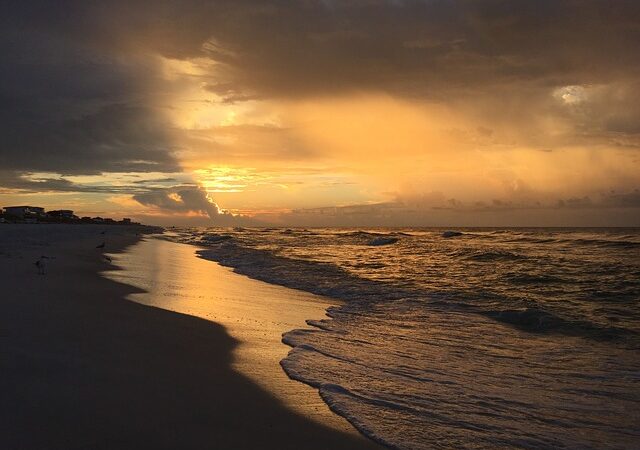People have imbibed the ideology ‘spend on experiences not on material things’. They are practicing it more and as a result with increased travel, more unheard of locations all around the earth are being discovered. One such beautiful discovery is the presence of Glow beaches at night at different places on the planet.
This phenomenon wherein the beaches glow at night is called Bio-luminescence. It is the production and emission of light by a living organism. Although many animals can create this effect, it can be clearly be seen being emitted by marine animals and smaller organisms in the ocean. It is caused by phytoplankton, a micro algae that float at the surface of the ocean water. They emit a bright blue light after they become agitated by wave movements or nearby swimming fish.
1. Sam Mun Tsai Beach, Hong Kong:
A phenomenon known as the red tide has been linked to Bio-luminescence. This is the case with Sam Mun Tsai beach in Hong Kong, Here, you can sometimes find crimson water during the day and glowing blue water at night. Unfortunately, certain types of the red tide can be harmful to other organisms, so it’s be sure to ask the authorities before you step onto the beach.
2. Luminous Lagoon:
Located in Trelawny, Jamaica is a popular tourist attraction due to its natural occurring Bio-luminescence. Take a boat to watch the fish swim through the water with a glowing trail. You can also swim in the ocean once you get far enough. It is one of the brightest in the world due to its warm climate, and if you decide to go out on a tour boat, the tour guide can even fill a bucket up with water for you to stick your hand or foot in.
3. Indian River and Mosquito Lagoon:
Located in East coast Florida, this place offers some amazing boat tours in the areas in summers to view some of the Bio-luminescence. Generally the tours are set up at night when the lights are the brightest, and are usually scheduled on days when the moons light won’t be as bright; so be sure to check the website before you fly to Florida. You can go out on a kayak and a nice trail of glowing lights following behind you.
4. Gippsland Lakes:
The Bio-luminescence in the Gippsland lake in Australia has been dimming slowly but surely. Of course the light is still visible, but it must be the right time of night, and will be very faint. If you do get the opportunity to see the glow, these waters are definitely safe for swimming, so dive in and surround yourself with the light that will surround you in the water. It is also a UNESCO world heritage site. If you decide to take your camera, make sure to adjust your shutter speed so you can capture the beauty of this naturally magical experience.
5. Mosquito Bay, Puerto Rico:
This is Perhaps the most famous of the glowing bays. Mosquito Bay.is located on Puerto Rico’s island of Vieques and is a popular tourist destination. They have specific and strict rules to protect this place. For instance, kayaking the bay is only permitted with licensed tour guides, visitors cannot swim in the bay, and visitors can’t wear chemicals on their body. But in spite of all that, this is one of the places on the list where you can see the highest amount of bio luminescence.
6. Toyama Bay, Japan:
This bay near the Japan Sea glows bright and the main reason is the presence of ‘Firefly squid’. They usually live deep under water, but due to a canyon in the bay, and get pushed to the surface, almost as if it were made for our viewing pleasure. The bay is designed particularly for fishing; however, you can go out on a fishing boat without any intent of working. The Namerikawa port has sightseeing boats, but you’ll have to be nocturnal for a day: these boats start going around 3 am. There’s also a cool museum dedicated to these squid.
7. Halong Bay, Vietnam:
This bay is a heritage site in Vietnam. A glowing tail of bio luminescence will follow you here when you move through water. The waters are specifically made for swimming, and you’ll see some pretty cool effects if you decide to dive in. Keep your camera set to action mode, and venture out when the waters are calm and the moon isn’t too high in the sky and is a must visit on a full moon night.


 By
By 



